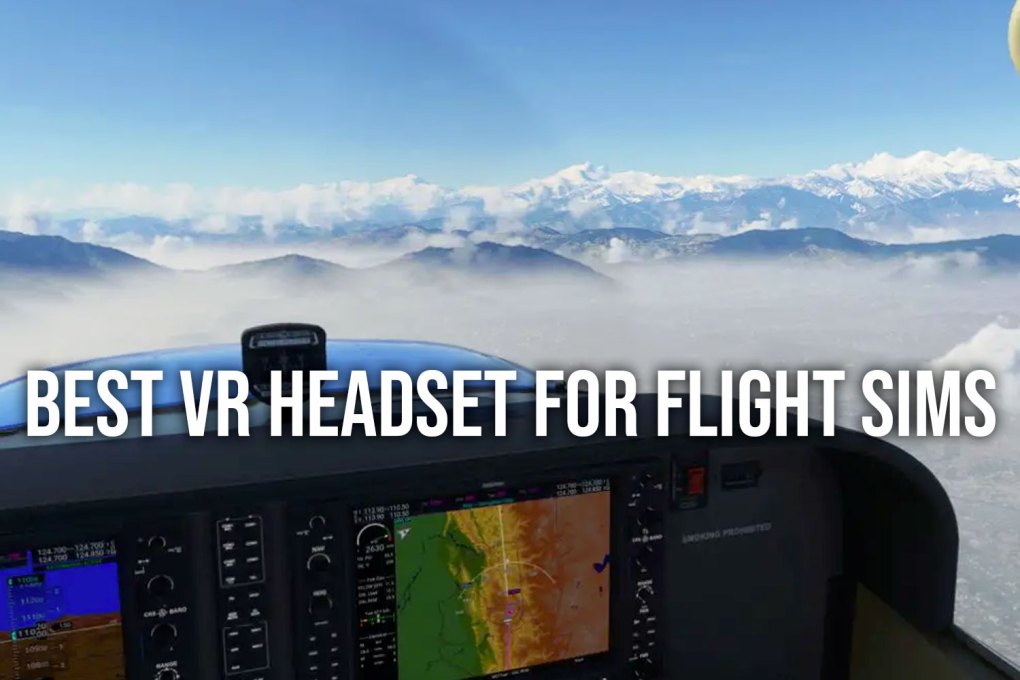Whether you're a casual virtual aviator or a seasoned pilot looking to enhance your training, choosing the right VR headset can significantly elevate your flight-swimming experience. VR technology offers a level of immersion that's unparalleled by traditional displays, making you feel like you're truly in the cockpit. You can look around, lean in, and interact with the virtual environment, providing a level of realism and presence that enhances training and enjoyment.
Read also: Best VR Flight Sim Games
Factors to Consider for VR flight Simming
Resolution: Higher-resolution VR headsets provide sharper visuals, which is crucial for spotting runway details, instruments, and navigation. Look for headsets with at least 2160x2160 pixels per eye for a crisp experience.
Field of View (FoV): A wider FoV allows for better peripheral vision and a more immersive experience. Aim for a headset with a FoV of around 100-120 degrees.
Eye-tracking: Eye-tracking in VR headsets can enable Dynamic Foveated Rendering, this gives you an FPS boost of 10-50%, which is useful for flight sims because flight sims like Microsoft Flight Simulator and DCS are very heavy on even the best modern GPUs, especially in VR.
Comfort: You might spend hours in your VR headset, so comfort is key. Adjustable head straps, cushioning, and weight distribution are all important considerations.
Refresh Rate: A high refresh rate (90Hz or above) reduces motion sickness and ensures a smoother experience, especially in fast-moving flight simulations.
Tracking: Ensure the headset has precise head tracking, so your movements are accurately replicated in the virtual world. Inside-out tracking does not require base station (which is an additional purchase), and is probably accurate enough for flight sims.
Compatibility: Check if the VR headset is compatible with your chosen flight simulation software and your PC's specifications.

Clarity in a VR headset is important for flight sims, so that you can read the dashboard well. Read more about Varjo vs Crystal comparison here.
Best VR Headsets for Flight Simming
Pimax Crystal-Sim: The Crystal has a resolution of 2880x2880 pixels per eye, even at 120Hz, and the QLED+ MiniLED panels give vibrant colors. The FOV is nearly above all other headsets, both vertically and horizontally. In addition to this, the Crystal also has eye tracking which supports Dynamic Foveated Rendering, and thanks to its inside-out tracking you don’t need base stations. Crystal-Sim is priced more favorably than the original, excluding the controllers that flight simmers are less likely to need.

Varjo Aero: The Varjo Aero headset stands out for its visual fidelity, offering a high-resolution display of 2880 x 2720 pixels per eye and integrated eye-tracking. The horizontal FOV is also good, but users mention the vertical FOV is small. The Varjo Aero lacks inside-out tracking, which makes it dependent on a base station to be used.

Meta Quest 3: This is a good budget choice, that supports both PCVR and standalone mode. It also has a decent resolution and field of view, lightweight, comfortable to wear, and easy to use. Considering its price, it's a great starter option for a lower/mid-range VR headset. It has no eye-tracking so you cannot use DFR to boost your FPS.

HP Reverb G2: The HP Reverb G2 boasts a good resolution and decent FOV, and you don't need base stations. It was launched in 2020 and is a great budget choice for flight sim enthusiasts.

Pimax 8KX: For those who demand the best in terms of visual quality, the Pimax 8KX is a top choice. With an incredible 3840x2160 resolution per eye and a 200-degree FoV, this headset is perfect for flight simulators that require detailed instrument reading.

Conclusion
Selecting the best VR headset for flight simming is a matter of balancing your budget, desired features, and system compatibility. Each of the VR headsets listed here has its strengths, but the Valve Index, Oculus Rift S, HP Reverb G2, Pimax 8KX, and Aerofly FS 2 all offer exceptional experiences in their own right.
Remember that while VR can greatly enhance your flight-simming adventures, it also demands a powerful PC to run smoothly. Make sure to invest in a headset that complements your specific flight simulation goals, and enjoy the breathtaking immersion that VR brings to the world of aviation. Happy flying!








